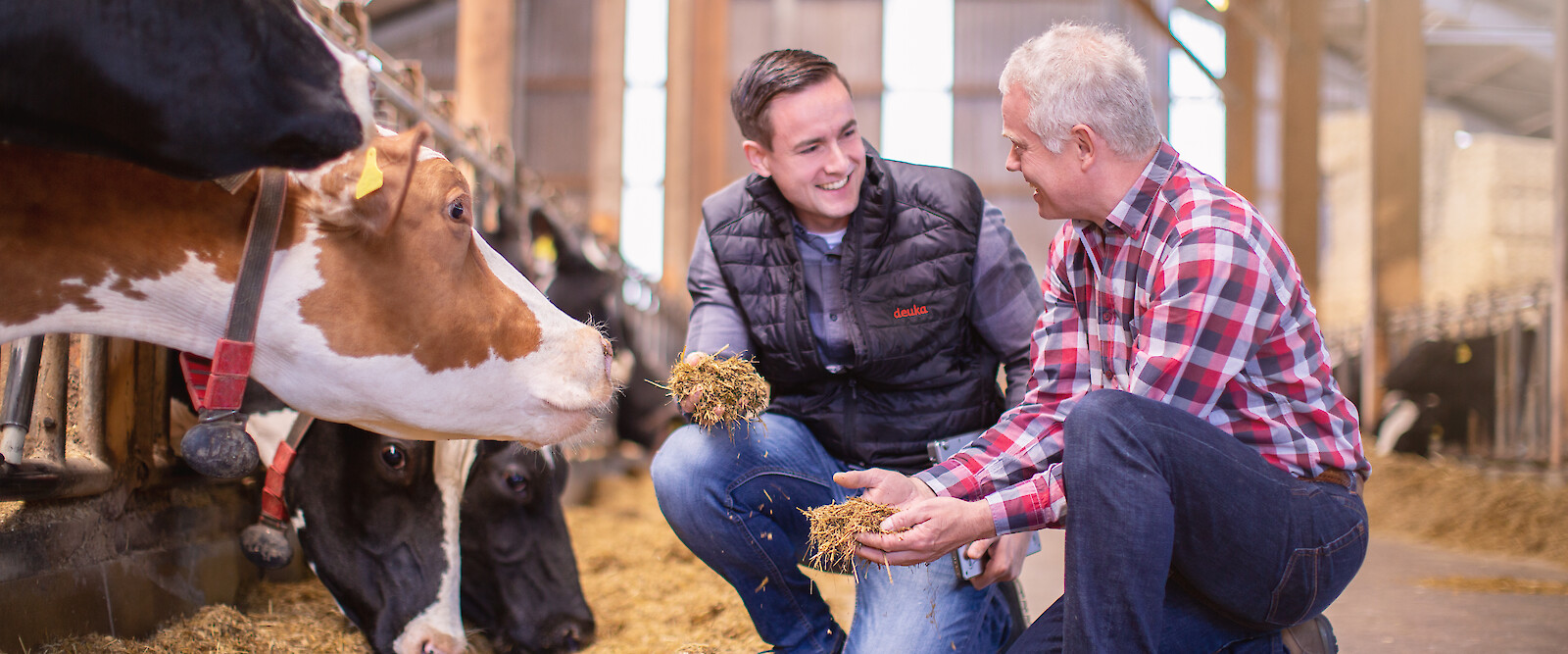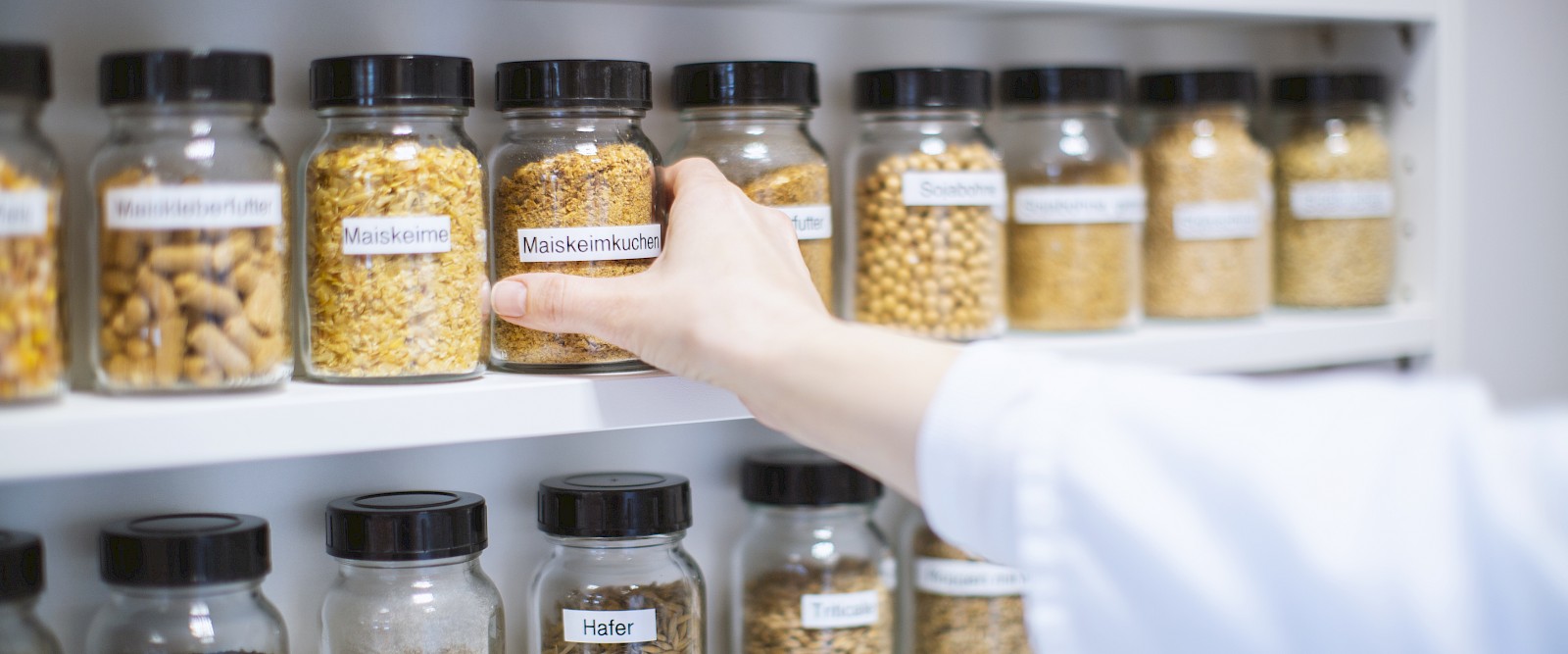Raw material and nutrient lexicon
Weitere Einträge
Formic acid
Formic acid is a naturally occurring acid. Among other things, it plays an important role in the intermediate metabolism in the transfer of C1 bodies. A small part of formic acid ingested with food is excreted unchanged in the urine. The largest part, however, is converted in the metabolism. The dairy cow also produces tiny amounts of formic acid during rumen fermentation.
The effect of formic acid against bacteria is mainly due to its pH-lowering effect. It is the strongest acid of the fatty acid series and, due to its high dissociation constants, is particularly suitable for preservation when clearly acidic products with pH values below three point five are desired.
Formic acid can be used as an ensiling aid in the preparation of silages (e.g. grass silage, maize silage or corn-cob mix). It has proved particularly useful for feedstuffs that are difficult to ensile, such as wet and protein-rich forage crops. The rapid lowering of the pH value reduces the growth of butyric acid and ammonia-producing bacteria and promotes the development of desirable lactic acid-forming bacteria. The lactic acid then formed to a corresponding extent achieves a low pH value required for storage. The silage stabilised in this way is characterised, among other things, by a typical lactic acid odour and is readily ingested by the animals.
Formic acid is also used in feeding to acidify sweet milk, skimmed milk, whey and milk replacer drinks for calves. This ensures stabilisation of these products over a longer period of time.
Another possible use of formic acid is in the feeding of young monogastric animals (e.g. piglets). On the one hand, the pH value in the feed is lowered, which basically has advantages in terms of feed hygiene. On the other hand, formic acid also reduces pH fluctuations in the stomach, which can occur, for example, due to uneven feed intake (overeating). This leads to a secure digestion and ultimately to improved growth performance of the young animals.
Recognition as a compound feed producer
Every company that producescompound feedcommercially must be recognised and registered by the responsible official monitoring authorities. For this purpose, the necessary expertise, the technical requirements, quality management measures and documentation of the processes in the company must be proven.
Even after recognition, the compound feed producer is regularly and intensively inspected by the authorities.






